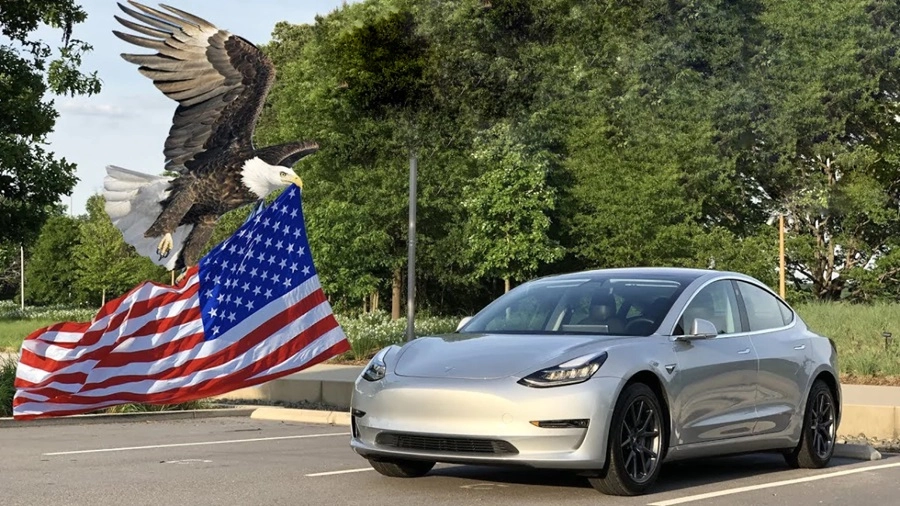During the last quarter of the past year, electric vehicle (EV) sales showed a growth of 29 per cent in the United States (US) compared to the same period in 2022.
Despite the North American figures for zero-emission cars registrations being lower than those of Europe, the US is on the right track.
What are the reasons for this growth? Below, Mobility Portal Europe recounts some of the potential reasons.
Tesla, ¿An absolute leader?

It’s impossible to deny the relevance of the American brand in the global EV market.
But, is it feasible to assert that the expansion of national sales is tied to the progress of Tesla?
The brand maintained the top position in the market for almost the entire year, not only in the US but worldwide, with a total record of 1.8 million electric car deliveries.
This figure represents a 38 per cent increase compared to the year 2022.
Locally, it seems that Tesla is a prophet in its own land. The company held a 55 per cent share of the total electric vehicle sales throughout 2023.
Although the United States lags behind other production and usage blocs of EVs, it is gaining prominence.
But… What role do legislative decisions play in this scenario?
What are the state incentives provided in the US?

One plausible answer is that on January 1, 2023, under Joe Biden‘s administration, modifications to the electric vehicle tax credit came into effect.
In the reform, it was established that the amount of state aid for 2024 would remain at 7,500 dollars.
Moreover, it was stipulated that the deadline to qualify for the subsidy was extended until December 2032.
Furthermore, before this legislative change, there was a rule that imposed a limit of 200,000 units sold for manufacturers. Upon reaching this figure, companies could no longer benefit from the subsidy.
This threshold was eliminated, making heavyweight market players like GM, Tesla, and Toyota eligible again.
On the other hand, the amendment includes a new tax credit for the purchase of EVs priced below 25,000 dollars. This assistance covers 30 per cent of the sale price, with a cap of 4,000 dollars.
The implementation includes the purchase of second-hand units.
It’s worth noting that individuals eligible for this benefit are citizens with incomes not exceeding 75,000 dollars annually or heads of households not reaching 112,500 dollars.
The beginning of this credit in the country
The EV tax credit was first introduced as part of the Energy Policy Act of 2005 as a way to encourage their production and adoption.
Initially, the subsidy was only available for hybrid vehicles, with a limit of 3,400 dollars.
In 2009, the American Recovery and Reinvestment Act expanded the incentive to plug-in electric cars and increased the maximum cap to 7,500 dollars.
Since then, this state aid has undergone several changes in terms of eligibility criteria, amount, and availability.
Among the achievements of the electric vehicle tax credit is a significant reduction in the upfront cost, making them more affordable for consumers.
Additionally, it incentivized manufacturers to invest in and produce more vehicles of this kind, leading to a greater variety of models in the market.
Should the US replicate the European model?
In the European Union, the total volume for the entire year 2023 exceeded 1.5 million units, reflecting a substantial increase of 37 per cent compared to 2022.
The market share of battery electric vehicles reached 14.6 per cent in 2023, whereas in the United States, the market share achieved during this period was 7.6 per cent, according to estimates from the researcher Kelley Blue Book.
It is worth noting that, while the North American country has not yet reached the distribution level in the sector that other regions like Europe boast, the pace of growth is not too far off.
The difference is just eight percent in the growth of zero-emission car sales in both areas.
The fact is that the members of the European Union have a well-defined organization, collectively, to promote sustainable mobility.
In this regard, the legislation approved in 2020, called “Fit for 55,” was of great relevance.
It is a package of regulatory actions to adapt EU policies with the aim of reducing net greenhouse gas emissions by 55 per cent by 2030.
Read more: How will European countries promote electric mobility in 2024?





